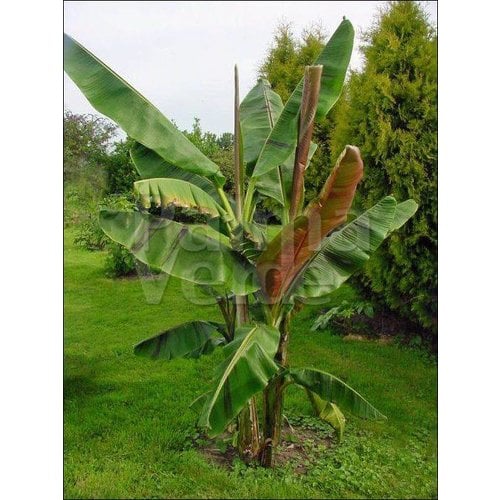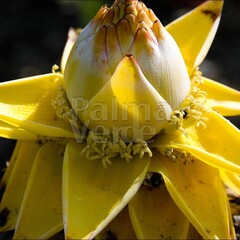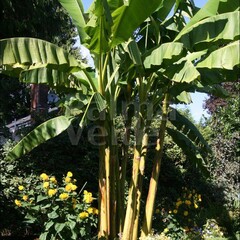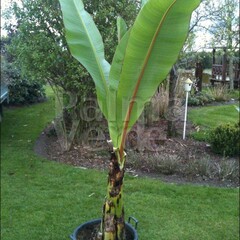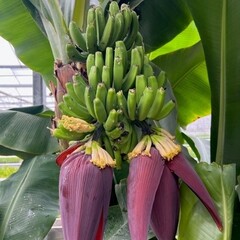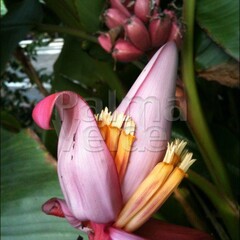- Article number: MUSSIRE01
The Musa sikkimensis Red Tiger has not been discovered so long ago. This garden banana is just as hardy as the Musa basjoo and should not be missed in a tropical garden.
It occurs at the foot of the Himalayas to an altitude of 2000 meters in the Sikkem area where snow is freezing and freezing.
The bananas of the Musa sikkimensis are edible, but whether it ever comes to carrying great fruit is questionable.
Firstly, it takes three years for the Darjeeling banana to flower at the earliest, then the fruit set depends on the summer we have. If it is a summer like in 2006, the chance of edible fruit is certainly present, but bananas are not very big in our climate.
Also beautiful of this species is that the leaves on the underside to burgundy discolored and on the top remains deep green with a tiger print.
The leaves are also stronger than those of the Musa basjoo and better resistant to the wind.
If this banana is allowed to overwinter outdoors, properly cover the soil around the banana with a layer of mulch so that the frost can not affect the roots.
The trunk will completely freeze and come back in the spring if the frost does not get too deep into the ground.
At temperatures below + 5 ° C degrees the growth of the banana stops, at -2 ° C degrees the leaves break. The stem freezes at even lower temperatures.
If you want the banana to have a larger return the following year, the stem must be properly insulated using straw, reed mats etc. Cut off the remaining leaves and pack the stem lightly (not with bubble wrap, does not ventilate and causes rotting).
You can choose to add extra heating in the form of a light tube. On the ground you can for example sprinkle a layer of old horse manure or cow manure pellets in the spring.
The plant will now grow from the conserved stem and become even larger as the year before. Only in this way is it possible to get the Musa sikkimensis to bloom.
After flowering, however, the plant will die off, but from the rhizomes new plants grow from the ground. This process continues to repeat itself.
It will be a nice full bed after a while. This banana tree can also be kept in a large tub. Give plenty of water in the summer and a gift organic (cow manure) or liquid manure every two weeks from April to September.
This ornamental banana is a must for your garden for a tropical look. The Musa sikkimensis starts a little slower in the spring than the Musa basjoo, but once in the growth it goes fast! When shipping the bananas in a package, it is possible that we are cutting back the sheet of bananas. These grow back very quickly.
Winter hardiness zone 7a (-20ºC).











